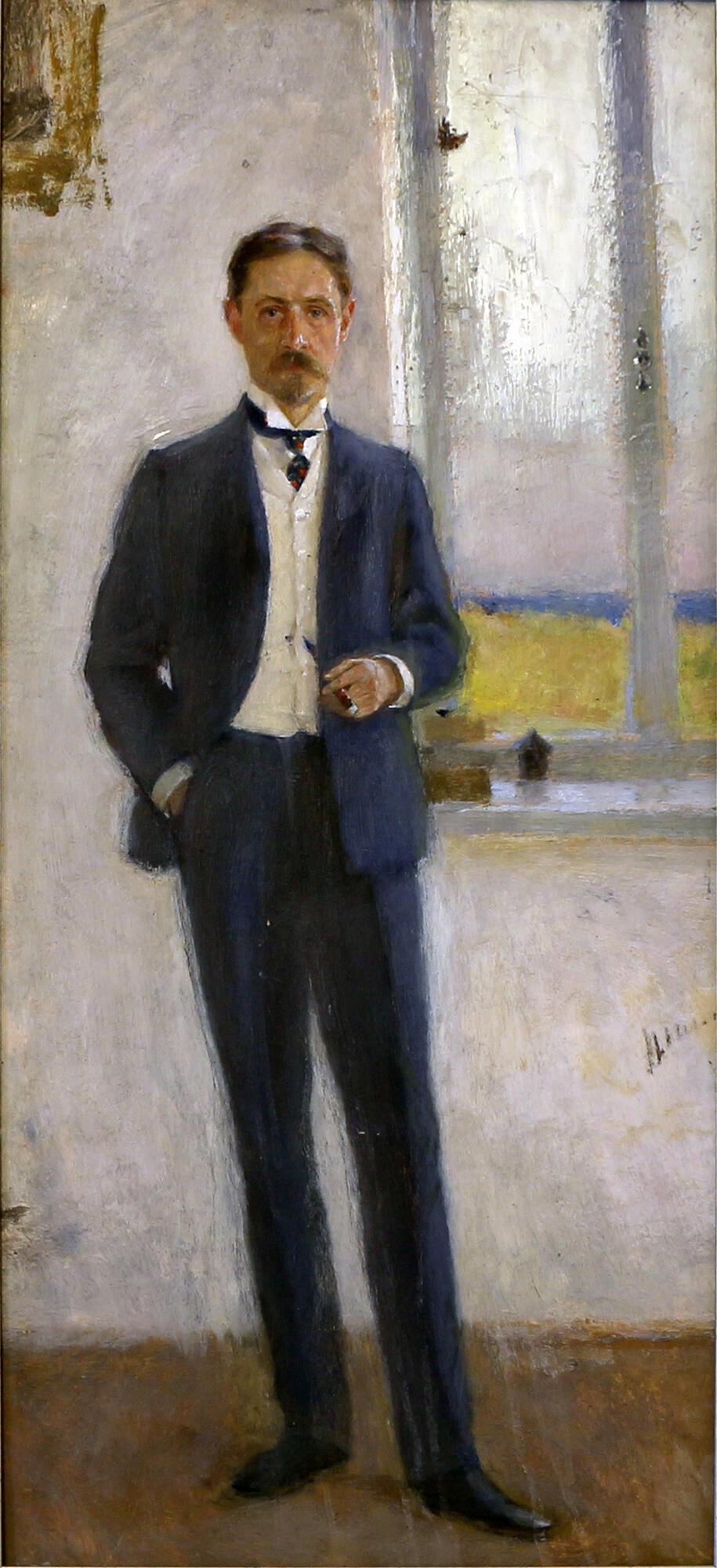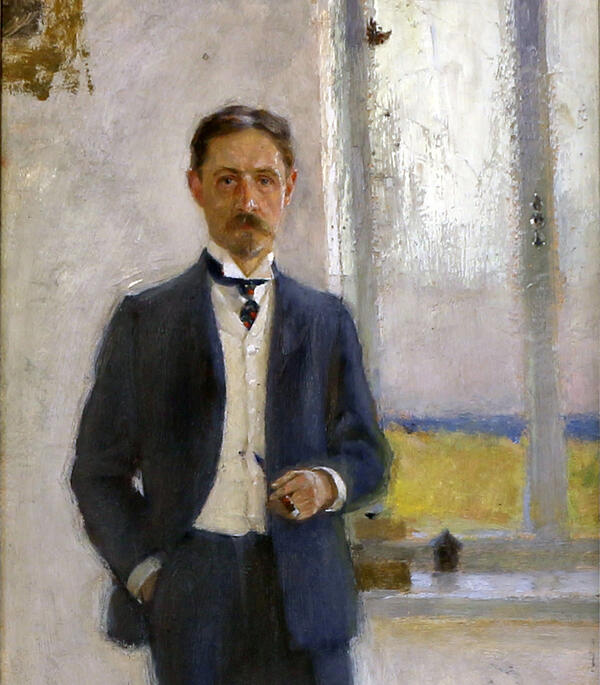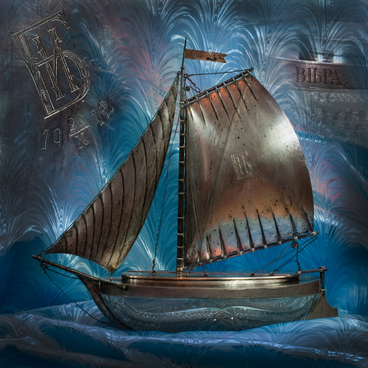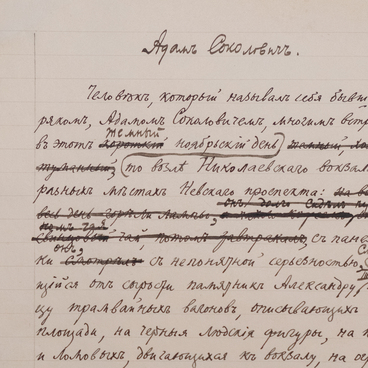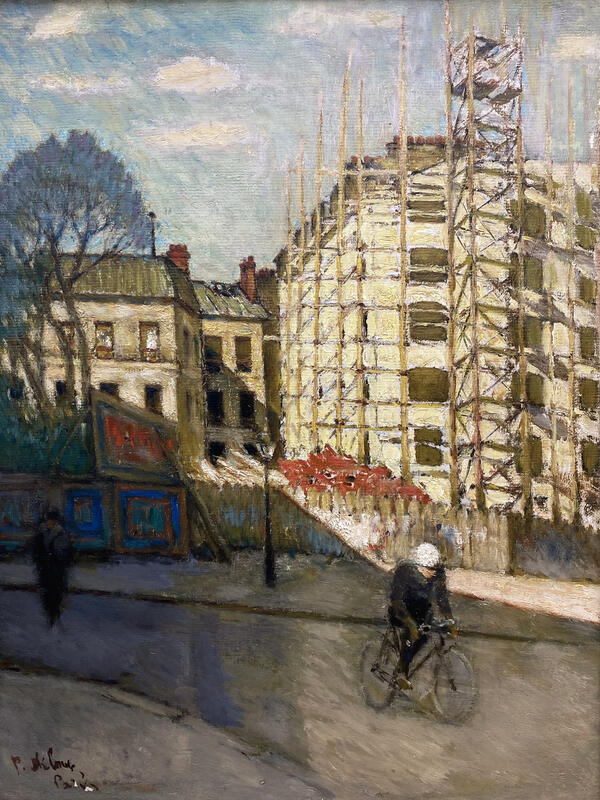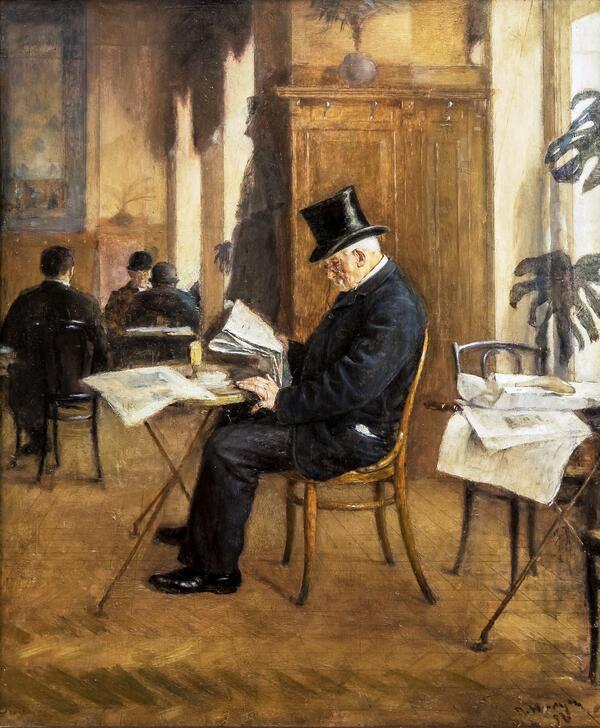The portrait of Ivan Bunin presented in the exhibit was created by his friend, artist and writer Pyotr Nilus.
The artist worked on the portrait of Bunin in 1918, during his so-called ‘symbolic-romantic’ period. Starting from the first decade of the twentieth century, Nilus painted in an impressionistic manner, often portraying sophisticated ladies and gallant gentlemen. He painted Ivan Alekseevich in such a dapper image: in the picture the Russian classic appears in a dark blue suit with a light vest and a coloured tie. The writer holds a cigar in his left hand and keeps his right hand in his pocket.
The artist worked on the portrait of Bunin in 1918, during his so-called ‘symbolic-romantic’ period. Starting from the first decade of the twentieth century, Nilus painted in an impressionistic manner, often portraying sophisticated ladies and gallant gentlemen. He painted Ivan Alekseevich in such a dapper image: in the picture the Russian classic appears in a dark blue suit with a light vest and a coloured tie. The writer holds a cigar in his left hand and keeps his right hand in his pocket.
Nilus painted Bunin from nature. In September 1918, Ivan Alekseevich and his wife Vera Nikolaevna rented rooms in the Odessa mansion of the artist Evgeny Bukovetsky, where Nilus lived with his family at the same time. The Bunins left Moscow for Odessa after the revolution events of 1917: the writer strenuously refused to accept the new Soviet power. Literary scholar Igor Sukhikh wrote that in those days ‘Bunin [heard] the cacophony of rebellion.’
In Odessa, however, it was also restless: there was a struggle between the Ukrainian socialists and the Hetman regime, a radical underground launched its activities, even acts of terror took place. Only in the suburbs life was relatively peaceful – and the Bunins and Nilus went to rest at the dacha of mutual friends near Odessa. The artist painted his friend in one of the rooms of that country house.
Nilus was not only a good friend of Bunin, but also a real connoisseur of his work. Researchers suggest that this is why he placed several details on the canvas – an icon in the upper left corner, a butterfly on the window frame and a view of the sea – which echo the images from the 1916 poem of the writer ‘The day will come – I’ll disappear…’
The day will come –I’ll disappear,
While in this selfsame empty room
That table, bench, icon austere
The same contours of space consume.
And just as now will flutter in
That silken butterfly serene –
To rustle, palpitate and ding
Against the ceiling’s bluish-green.
And the sky’s horizon, cerulean glow
Will peer in, gaze through this window
While the steady unruffled blue of the sea.
Bunin I.A.
